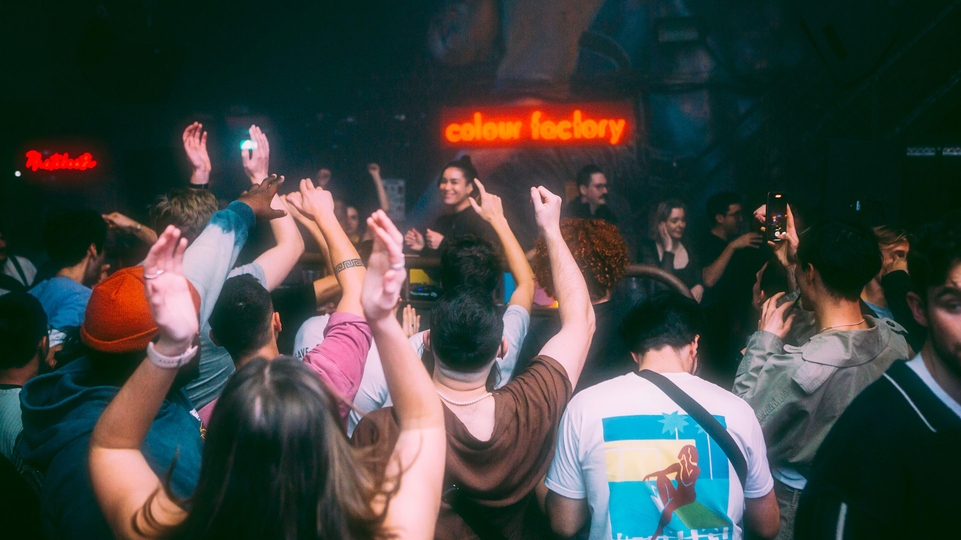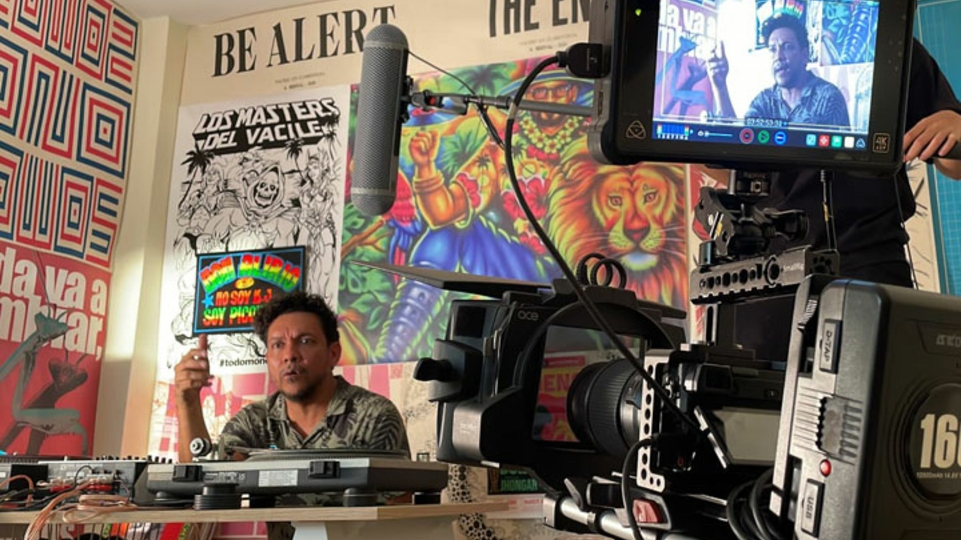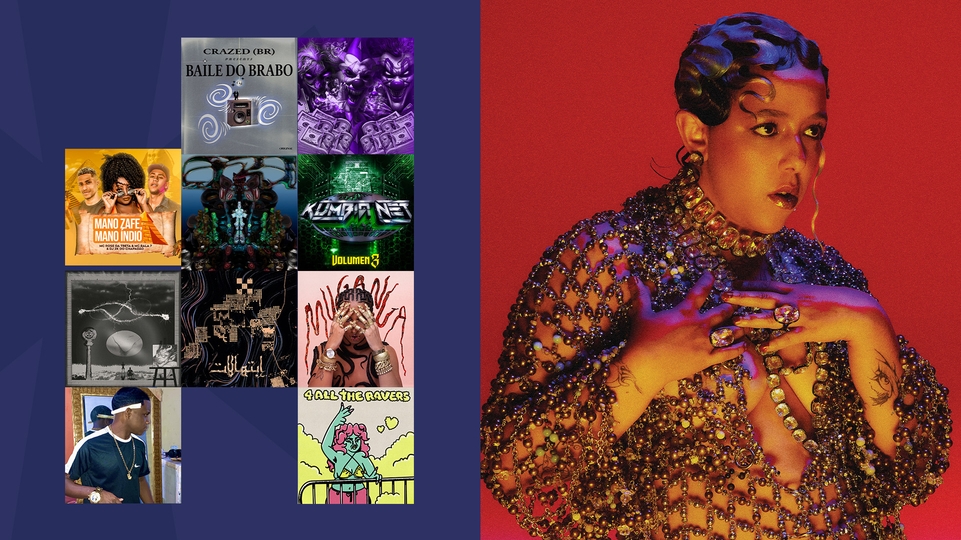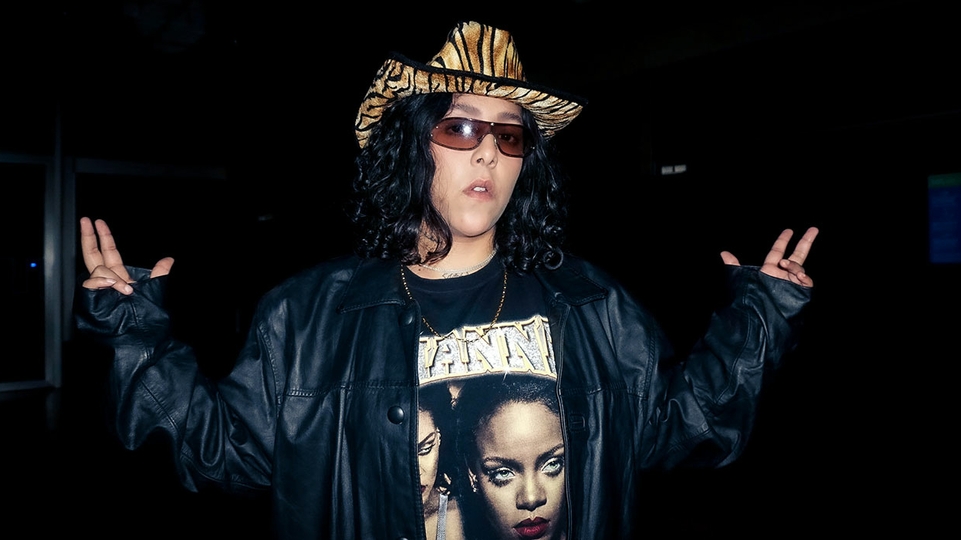
Latin America's electronic underground is breaking barriers to secure its global future
Latin American electronic music is everywhere, with once overlooked artists from countries like Mexico, Brazil and Venezuela now touring globally. Felipe Maia examines the current boom of sounds ranging from heavy baile funk and speed dembow to deconstructed reggaeton and raptor house, and looks at some of the barriers that artists still face, both at home and abroad
Ana Lucia is somewhere in Norway, sipping her morning coffee in a honey-hued wooden hotel lodge sided by a clear river, nestled not far from fjords and lush green fields. It's a breathtaking trip that she’s enjoying as part of the perks offered by the local festival that's hired her to DJ that night. A few years ago, she could hardly have imagined herself in such a landscape, in such a context. Hailing from Mexico, based in Germany, and performing as Coco Maria, she’s witnessed the surge of Latin American electronic music’s popularity in Europe in recent years, with all its vibrant hues and grey-ish shades.
“Once I was invited to play at a festival, and I played on a stage far from the main area, with seats. But today, in this festival, I will play at midnight in the main room,” says Coco, who first started DJing in the mid-2010s when she moved to Berlin to work as a teacher. She later specialised in DJing a plethora of Latin American sounds, from ‘60s obscure samba tunes to post-modern salsa. “When I started playing this kind of music, there were not that many venues to play. It was always impromptu places, small bars, everything was DIY, and sometimes I was the only one playing Latin American music in festivals.”
Over the last decade, genres ranging from heavy baile funk and speed dembow to deconstructed reggaeton and downtempo cumbia have become the norm rather than the exception at some of the world’s most renowned venues. The warehouse-like maze of Razzmatazz or the unfamiliar corridors of Berghain’s Panorama Bar are no strangers to these sounds today, just as festivals such as the Netherlands’ Dekmantel and Spain’s Sónar have progressively added Latin American acts to their line-ups, once dominated by US and European DJs.

“Our music knows no bounds, and people are becoming more open-minded. Line-ups have become more diverse today,” says Coco, who has also leveraged this fertile ground to showcase other artists from Latin America. Released in July, ‘Club Coco ¡AHORA! The Latin Sound Of Now’ brings together modern artists who push sonic boundaries under the guidance of the Mexican DJ and selector. Featuring the likes of Los Pirañas, Dip In The Dub and Candeleros, it’s a selection that draws from cumbia, salsa and samba, but presents them in novel ways, whether doused in dub delay or accompanied with acid basslines and hallucinogenic synths.
“This compilation is a portrait of a scene with new artists, that kind of compilation for people who don’t know much about that scene,” explains Coco. “All the artists in this album are Latin American, or have been influenced by music from Latin America. Many of them come from Latin America but live abroad, so they are representatives of their country on different continents. The compilation shows what’s happening in this scene, and also connects different worlds.”
As extensive as it may be, Coco’s compilation can only scratch the surface of the music emerging from metropolises like Mexico City and São Paulo today. Latin America is a vast and diverse region that sparks crucial conversations in the world of club music. It encompasses a multitude of countries while crossing ethnicities, genres and other cultural markers. To label it simply as “Latin American music” is as misleading as categorising something as “African music”.
While there are common elements shared by artists in both categories, their stories and styles are often vastly different, and many cross genre boundaries or simply don’t fit into a territorial label burdened with preconceived notions. “I believe the tide has been changing for us Latin American artists, but progress is still slow,” says BADSISTA. Emerging from the intense and vibrant urban rave scene of São Paulo, this Brazilian artist serves as a trailblazer for DJs and producers spanning from Mexico to Argentina.
Last summer, BADSISTA was featured in line-ups at some of Europe’s most renowned electronic music events, including Belgium’s colossal Glastonbury-like Dour festival. Based in Paris for a couple of months, where they rehearsed and relaxed when time allowed, BADSISTA’s experience in Europe differed significantly from their first visit in 2018. “It was quite a hustle back then,” they recall.

“It’s not about conflict; we aim to open people’s eyes. What we possess in Latin America is exceptionally valuable, and we’ve been breaking through the barriers to generate interest in our music.” – BADSISTA
For BADSISTA, the gradual rise of Latin American acts on European dancefloors is the result of the proactive approach they initiated years ago: a relentless commitment to independently climb the ranks abroad while simultaneously laying the groundwork at home. In BADSISTA’s journey, this translated into wearing multiple hats during their initial tours, and becoming a regular fixture at Mamba Negra, one of the prominent party collectives originating from South America. Their 10-year anniversary festival in May attracted nearly 10,000 revellers to an old factory plant in São Paulo.
“Artists like me, Cashu and Nick Léon are provocateurs,” says BADSISTA. “It’s not about conflict; we aim to open people’s eyes. What we possess in Latin America is exceptionally valuable, and we’ve been breaking through the barriers to generate interest in our music. Furthermore, through events like Mamba Negra, especially within the underground scene, we can invite DJs and producers from Europe, enabling them to witness firsthand the richness of our music scene.”
Based in Barcelona, Venezuelan DJ and party producer L’Miranda also believes that bridging continents side to side is a major force in pushing Latin American sounds. In July 2020, he and fellow DJ Diamantero started their own label, Deprerreo. A few months later, they kicked off their first party fully dedicated to reggaeton not only as a genre, but as a language, from its passionate lyrics to otherworldly takes on the world-famous dembow beat.
Listen to the new compilation on the label, ‘Para todxs lxs perrxs’, and there’s everything from jungle edits of reggaeton tracks to the speedy 4/4 kicks, claps and samples of L’Miranda’s ‘La Salsa’, via a raucous d&b remix of Puerto Rican superstar Bad Bunny. “I’ve always had this globalised vision of music,” says L’Miranda. “We’ve always wanted to provide a platform to Latin artists experimenting with ‘urban music’.”
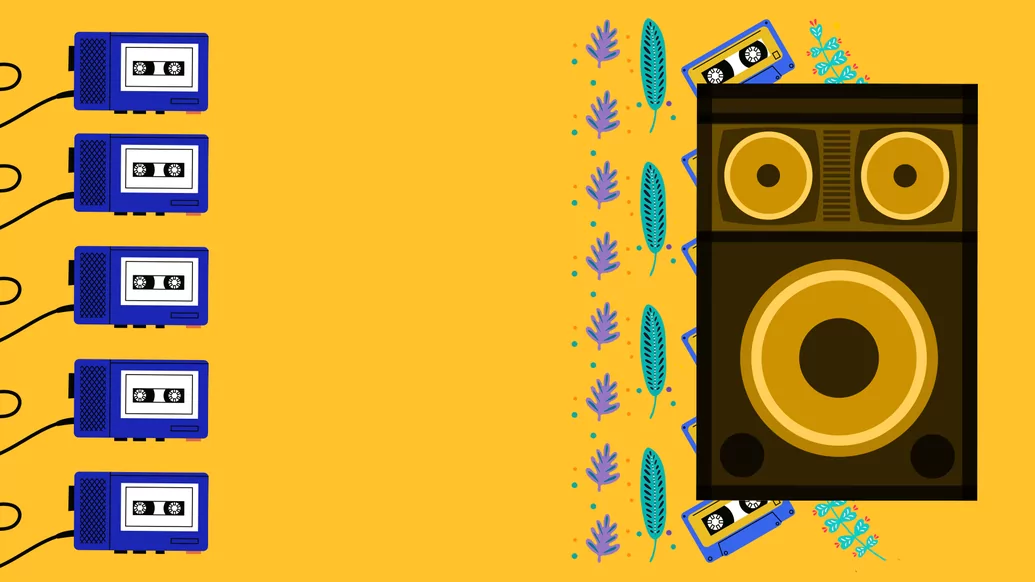
A few months ago, he was reached out to by the British platform Keep Hush for a collab party in Barcelona. This was a major opportunity to showcase talents and sounds that cross the borders of club music, while keeping both feet grounded in Latin American styles. “We did a set with tracks ranging from 80 to 190 BPM, from classic reggaeton to jungleton,” says the DJ. “When I first got to Barcelona a few years ago, people listened more to trap and reggaeton, but now I think there are more artists creating tracks within the Latin American music realm; I believe the spectrum is wider today.”
The collaboration with the British platform also raised a question mark for the Deprerreo curation: what does it mean to make Latin American electronic music today? Having artists from the global North showing different levels of interest in the electronic sound that was once exclusive to cities like Caracas, it’s hard to pinpoint the legitimacy of music-making that could either entail prolific cultural exchange, or simply mercantilist cultural dominance. “For this party, we invited DJs who are pushing the sounds of Latin America beyond,” says L’Miranda. “By this, I mean a Latin American immigrant in Europe who brings their influence and music from the continent. Or perhaps you’re someone from elsewhere who’s promoting Latin American music, releasing tracks, collaborating, and organising large festivals and events.”
While these questions are raised, there are more tangible issues for emerging artists under the Latin American label. Lucia Anaya, a Mexican manager and music publicist with more than a decade of experience, points out touring costs as a significant obstacle for artists she represents, including the Argentinian-through-Mexico DJ and producer Tayhana, whose genre-hopping sets and drum-laden tracks have attracted attention from artists like Spanish pop star Rosalía — leading to a collaboration on her album ‘Motomami’. “I believe that people outside of Latin America now see us with a certain cultural value,” says Anaya, “but touring is expensive. A working visa in the US can range from four to five thousand dollars.”
Another critical bottleneck hindering the growth of Latin American club music is the lack of a solid local infrastructure when it comes to labels, managers and agencies. Indeed, DJs like Brazilian tech-house artist Alok face no issues when playing on the world’s biggest dancefloors — however, when it comes to underground music, the path is much more challenging. “There are only a few labels that have successfully navigated the Latin American market for underground music, such as N.A.A.F.I and TraTraTrax,” she says.
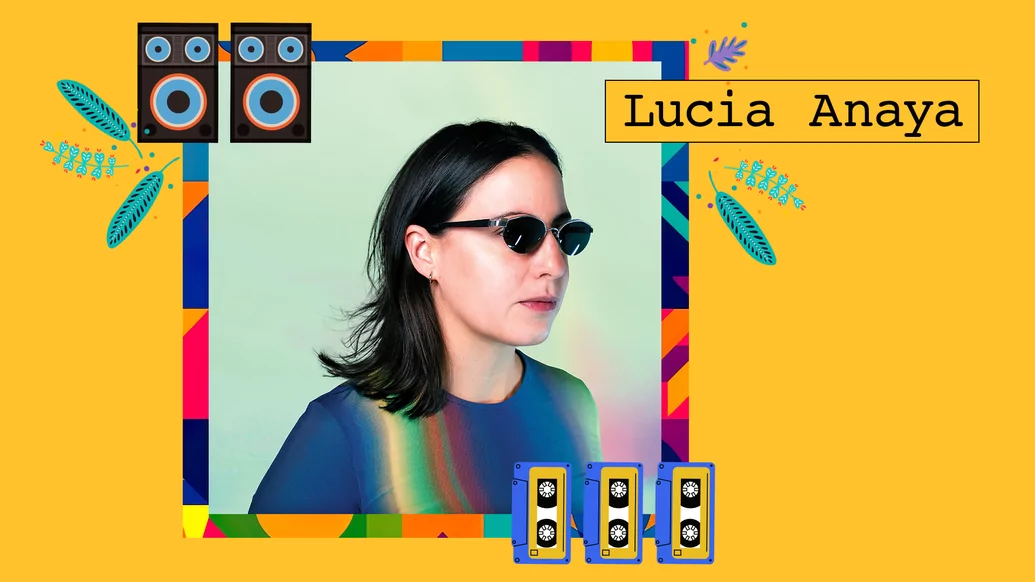
“After years, there are Latin American DJs who are finally being recognised for their craft. They truly deserve the recognition.” – Lucia Anaya
This landscape also ties back to some of the region’s long-standing issues like unstable governments and weak currencies — all of which have been further exacerbated by the pandemic. Moreover, according to Anaya, it’s not uncommon to see local promoters providing the best conditions for international DJs while local artists lack the basics for good performances, from technical riders to adequate staff. “I believe that Latin American promoters should support local artists more and provide them with the necessary tools to enhance their performances,” says Anaya.
If Latin American electronic music continues to grow, propelled by the inventiveness of its creators, solidifying the local industry and international connections will also be key to ensuring a better foundation for next gen artists — while shedding light on overlooked pioneering figures. Anaya recalls the case of DJ Babatr, who finally toured Europe in 2023, showcasing Venezuela’s raptor house. “After years, there are Latin American DJs who are finally being recognised for their craft,” says Anaya. “They truly deserve the recognition.”
Decades ago, when raptor house first emerged as an underground movement in the clubs of Caracas, no one could have imagined the genre would receive acclaim from specialist media abroad. However, it’s the fierce and frantic beats once pioneered by Babatr and his peers that lead the way in ‘Xtasis’, his track in collaboration with producer Nick Léon, which found its place on almost every best-of list in electronic music media for 2022, including DJ Mag's.
Witnessing packed dancefloors with speakers pumping out sounds with hints of cumbia or baile funk drums is no longer unusual, and nor should it be to see Latin American artists in the DJ booth. As Mexican DJ Coco Maria states, hours before her gig in Norway: “I believe that our music is more present than ever.”



